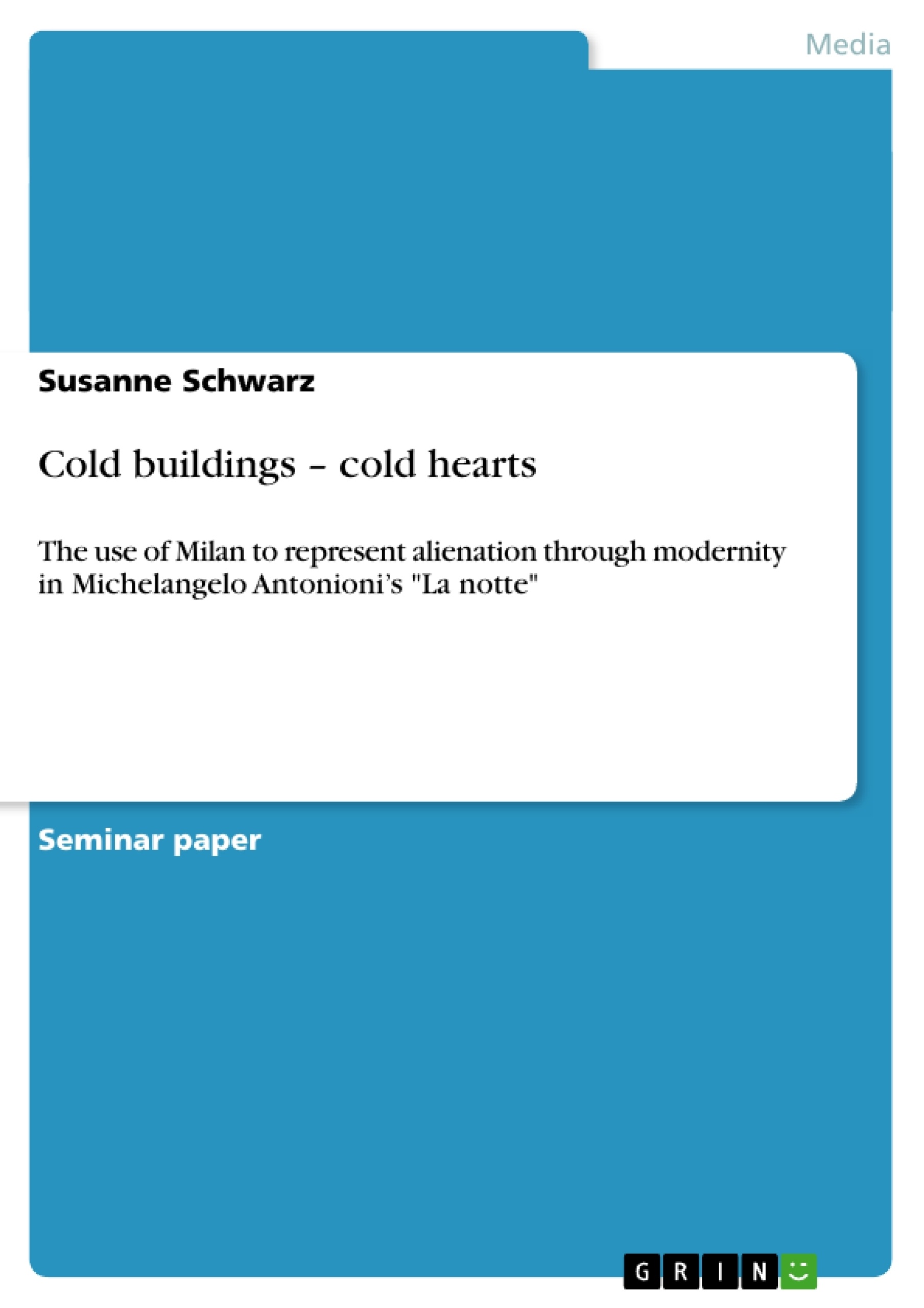Michelangelo Antonioni is one of Italy’s most famous filmmakers of the post-war era. His films are pieces of artwork, the plot develops slowly and there is not much going on. And that makes Antonioni’s films difficult to understand for the mass audience. In his seventh feature film La notte (1961) Antonioni shot in and around Milan in a way to create a disturbing and anonymous atmosphere. This essay will analyse how Antonioni uses the city’s architecture and landscape to illustrate the alienation of people in the modern world. This essay will have a look at the setting, how Antonioni frames the architecture and the characters in one shot. Two specific sequences of the whole movie will be analyzed properly: The opening sequence and the sequence in which Lidia wanders around the city and the periphery.
Inhaltsverzeichnis (Table of Contents)
- Introduction
- Antonioni's films in general
- La notte
- Milan
Zielsetzung und Themenschwerpunkte (Objectives and Key Themes)
This essay aims to analyze how Michelangelo Antonioni uses Milan's architecture and landscape in La Notte to illustrate the alienation of people in the modern world. It focuses on the film's setting and how Antonioni frames the architecture and characters in a single shot. It particularly examines the opening sequence and Lidia's wanderings around the city and its outskirts.
- The use of architecture and landscape to convey alienation in the modern world.
- The portrayal of moral coldness and spiritual aridity in post-war Italian society.
- The exploration of changing relationships between characters and their surroundings in the context of industrialization and the "economic miracle."
- The depiction of love and the end of marriage in Antonioni's films.
- The thematic connections between La Notte and other films in Antonioni's "trilogy" (L'Avventura, L'Eclisse).
Zusammenfassung der Kapitel (Chapter Summaries)
The introduction establishes Antonioni's cinematic style and themes, highlighting his interest in portraying the alienation and "moral coldness" of modern society. The essay focuses on La Notte and its use of Milan's architecture to convey these themes. The second section explores the broader context of Antonioni's filmography, emphasizing his focus on the upper-middle class and the dynamics of love and alienation in their relationships. The third section delves into La Notte, discussing its plot, characters, and stylistic elements. The final section examines the specific use of Milan as a cinematic setting, highlighting its unique atmosphere and Antonioni's artistic choices in framing the city.
Schlüsselwörter (Keywords)
This essay explores the key themes of alienation, modernity, urban landscapes, and the portrayal of love and relationships in the films of Michelangelo Antonioni, focusing on La Notte and its use of Milan as a cinematic setting. It examines the relationship between architecture and character psychology, highlighting Antonioni's stylistic innovations in camerawork and editing. The essay also touches on the historical context of post-war Italy and the "economic miracle" that shaped the social and cultural landscape of the time.
- Quote paper
- Susanne Schwarz (Author), 2009, Cold buildings – cold hearts, Munich, GRIN Verlag, https://www.grin.com/document/136458




